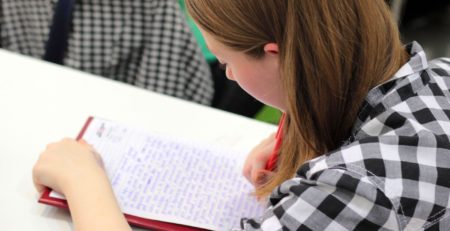Winter Stem Activities
“Oh, the weather outside is frightful, and STEM can be so delightful. We can learn in the rain or the snow but… Let it snow! Let it snow! Let it snow!” Even on the snowiest of day’s moms can keep their children busy learning core science, technology, engineering and math. These activities help students develop a strong educational base and equip students with life skills which can help with future careers. Learning can be fun and when children are having fun, they forget they are learning. The following activities are designed for kids to have fun during the winter.
Celery Osmosis
How does water travel through a plant? By the process of osmosis! Plants are filled with cells and water moves through the cells and cell walls by the process of osmosis. When the cells are full, the celery stalk, stems, and leaves stiffen. This stiffening due to increased water pressure is known as turgor pressure. Without water, the cells lose their shape due to less water available to fill the cells, thus no pressure can build up. If you have seen wilted or droopy celery this is what happened! Give it some water and observe the results!
Experiment: Take some food coloring, add it to water, and add the celery. Have a second group do everything the same except do not add food coloring. Observe the results and see how water effects turbidity. Discussion Topics: The Scientific Method.
Save the Lego
Ice melting activities are easy, but takes a few hours to create, so one needs to prepare in advance. This is a perfect science experiment for younger kids.
Experiment: Take an ice cube tray, place a Lego in each tray, fill with water, and freeze. When the ice has formed, use hot water to melt the ice to free the Lego. Let one’s imagination run wild. Discussion Topics: Why does water change form when it freezes? Why does ice melt?
Sink or Float
What items sink and what items float in one’s kitchen?
Experiment: Utilize different fruits and vegetables, aluminum foil, aluminum cans, spoons, sponges, etc. Get a large container of water, make a prediction chart about the items you have chosen, and place the items in the water. Wait a few seconds. Does the item sink or does the item float? This is a simple but a very engaging activity for young children. Discussion Topics: Why did the item float or sink? Were your predictions correct? Why?
Make “Fake Snow”
This experiment involves a gentle chemical reaction while letting a child play with some fun goop. To make snow, one will need 2 cups of baking soda, 1/3 cup hair conditioner, large mixing bowl, and paper towels.
Experiment: Measure out the baking soda and hair conditioner and mix them together in the mixing bowl with your hands. After a few minutes of mixing, the baking soda and conditioner will begin to look and feel like snow. Use the snow to create shapes and have fun! The snow is created by forming a polymer. Polymers are molecule chains containing primarily similar units, like Carbon for example. Discussion Topics: What parts of the baking soda and the conditioner react? Make a snowman and discuss its awesomeness!











